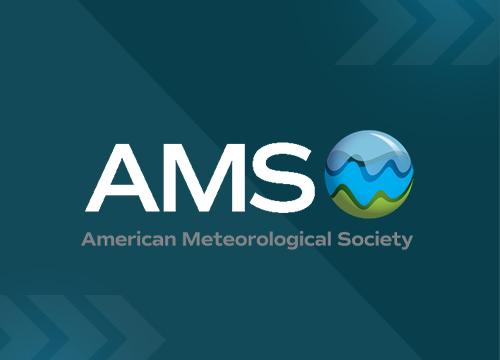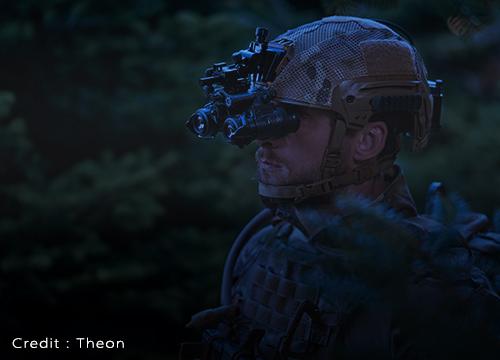Increased need for automated food quality inspection creates opportunity for a growing company
Around the world, the food processing industry is driven by a number of trends.
- The global population is growing, and is becoming more and more urbanized. This is creating further need for industrialized markets around the world, in order to serve these more densely populated areas.
- Millennials are driving change in the food industry, as they seek to understand both what they’re consuming and the quality of those products.
- Supply chains are increasingly complex and global, making it more and more difficult to ensure food quality and safety standards are maintained.
- Safety regulations are evolving, and many regulators are now holding food processors to strict requirements for both maintaining food quality and avoiding food contaminants.
- Recalls due to contamination and other food safety issues are climbing. In 2019, 337 recalls were issued by FDA and USDA FSIS.
These changes require an increased level of quality inspection during the manufacturing process, and at the same time encourage industrialized (and therefore automated) processes. They are also creating a growing demand for equipment that can measure the nutritional quality of food products.
1) P&P Optica and food quality inspection
P&P Optica (PPO) was established in 1995 and began as a spectroscopy research company. Spectrometers, unlike a traditional imaging system, provide spectral components of each portion of the item being inspected. This data is further used to analyze the chemical makeup of the inspected
material.
PPO’s research in spectroscopy was so unique that they built a clean lab in their facility to develop and manufacture their own gratings, the heart of a spectrometer. This enabled PPO to build world-class spectrometers that produced high signal-to-noise ratio and reduced stray signals – which in turn made PPO’s patented spectrometers better at collecting light signals than any others on the market. This means their system can provide cleaner information that is faster and more reliable.
Figure 1.1 PPO’s spectrometer.
As spectroscopy evolved, PPO started looking at industrial applications for its patented technology. The company has worked in oil and gas, medical technology and space exploration, providing advanced solutions. In 2015, PPO turned its eyes towards food processing. Through partnerships with food processors, PPO proved its ability to solve some of their biggest problems: identifying foreign objects such as rubber, plastic and bone that can’t be found by other automated inspection solutions.
PPO developed and built a unique Smart Imaging System, which works in the Short Wave InfraRed (SWIR) region and combines hyperspectral imaging with Artificial Intelligence (AI) to read and understand food chemistry. This system is used to assess and sort food in-line and in real time. The Smart Imaging System can improve the quality and safety of food produced in a processing plant, and optimize the plant’s production at the same time.
Figure 1.2 PPO’s Smart Imaging System.
2) Assessing food quality and safety at PPO
PPO’s patented Smart Imaging System uses hyperspectral imaging to “see” the chemical make-up of food products as they’re being processed. Hyperspectral imaging is a radical improvement over camera-based and multispectral systems in automating food production. PPO’s clients can automatically and accurately assess product qualities like tenderness; protein, water and fat content; and freshness. They can also identify and remove physical contaminants (like plastic, bone and rubber) which technologies like X-Ray can’t find. And PPO can do it all at line speed, in real time.
Figure 2.1 Data captured across different imaging systems. The camera-based system sees only what the eye can see (3 colours). The multi-spectral system can see some chemical information, but it’s limited. PPO’s hyperspectral imaging system can see the full range of spectra, providing a complete chemical profile of the products being inspected.
Figure 2.2 Building a robust system requires a robust sub-system.
PPO’s Smart Imaging System combines the collected information with data analytics software and machine learning to provide unprecedented food inspection capabilities. Using this data, PPO’s system provides rich insights that enable processors to make safer, higher quality food for their consumers, optimize the use of their best products, and maximize their profit margins. The same insights can be used to manage product inputs, address supplier issues, adjust production processes, and much more.
This solution helps to address one of the biggest contributors to climate change by significantly reducing food waste in the food processing plant. In addition, the insights that PPO can provide will drastically reduce the amount of time and human capital that food processors spend to identify and resolve contamination problems. The latter leads to a significant improvement in the bottom line for PPO’s clients.
Gratings, optics, lights and a camera form the core components of PPO’s Smart Imaging System. Each element has to be tested and developed meticulously to allow PPO to build a world-class spectrometer.
Figure 2.3 Core components of PPO’s spectrometer.
The camera is essential for capturing the best possible image with a spectrometer. And that’s where Xenics comes in.
3) The Cheetah camera
PPO’s Smart Imaging System works like a push-broom scanner using the Cheetah camera, manufactured by Xenics.
Figure 3.1 Configuration of the Smart Imaging System using Xenics Cheetah.
The Cheetah is a high performance VGA (640×512 pixels) format camera, operating in the SWIR realm from 0.9µm to 1.7µm. This 20µm pitch camera is based on InGaAs with Xenics’s unique technology, which makes it highly sensitive with a high dynamic range (60dB). It can run incredibly fast at 400 Hz thanks to Xenics’s specific readout circuit.
Depending on the version, its full frame speed can be 400Hz/ 800Hz and even a 1700Hz is available, which makes it the fastest camera in the SWIR market. This option (with no changes in its mechanical size) can help provide a faster system when required, without a major system overhaul.
Figure 3.2 Cheetah camera.
Designed for very demanding applications, the Cheetah camera is offered in a compact mechanical housing and with a CameraLinkTM interface, which makes it compliant with industrial systems requiring low latency.
Thanks to its high performance, its industrial oriented design, and its ease of integration, Cheetah happens to be an excellent solution for high-end hyperspectral imaging systems like PPO’s Smart Imaging System.
4) Why PPO chose the Cheetah camera
When choosing the SWIR camera for its hyperspectral food quality inspection system, PPO had a number of important criteria to consider:
- The camera needed to be highly sensitive in the 0.9-1.7µm wavelength. InGaAs technology is ideally suited for this part of the spectrum.
- For an industrial inspection system, reliability is a must. The camera should thus avoid any weak parts (such as rotating coolers or any other mechanical moving parts). Cheetah solved this requirement, with only a one-stage TE (thermoelectric) cooler.
- With the system operating in a push-broom mode, it was crucial that the camera be capable of inspecting at line speed. Cheetah’s 400Hz (which is their minimum speed) met the requirement; this became one of the key reasons why PPO chose the Cheetah camera.
- For a system to be installed and robust, it is important that the system is compact. This is definitively the case for Cheetah which is 143mm x 137mm x 95mm in dimension.
- When designing the system, PPO planned for future needs that would require a system upgrade to increase speed. This was being addressed with Cheetah, which already has 3 speed variants without change in it’s form factor. That enables PPO to upgrade the system up to 1700Hz with minimal system overhaul. For PPO, this was a unique feature and a key point for their decision to use the Cheetah camera in their Smart Imaging System.
- A hyperspectral system is complex and has to analyse huge amounts of data at line speed. Simplicity in communication protocol at the camera end is essential, given current computing capacity limitations. Cheetah camera’s interface is simple and well documented, making it simple to integrate and reducing the amount of development time required.
5) Conclusion
PPO’s Smart Imaging System provides a world class automated food inspection solution, which helps food processors to deliver safer, higher quality food products to consumers. This is made possible through robust design at PPO (lenses, gratings and housings) and through their choice to work with a top-of-the-line camera like Cheetah from Xenics. The result of this combination is an intelligent system that helps reduce food waste, while increasing profits for food processors and keeping consumers satisfied with safe, high quality food products.
Thanks to its innovative solution, and to the Xenics Cheetah camera, PPO is the best company on the market to answer the question – “What’s in your food?”





